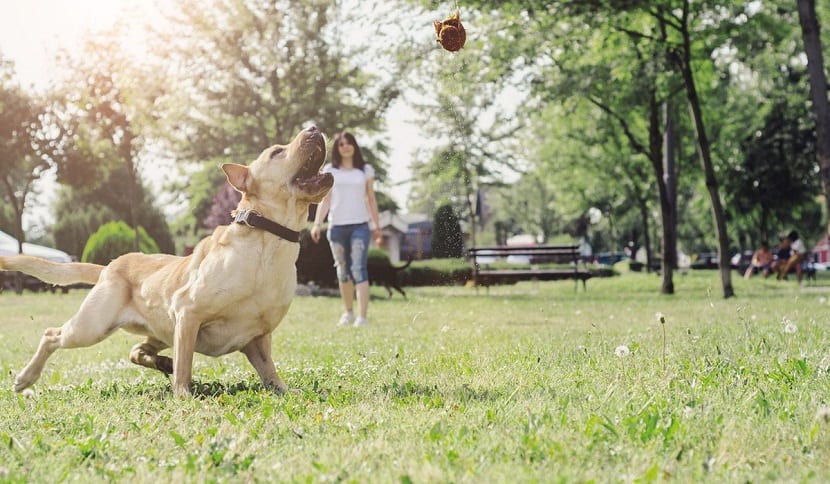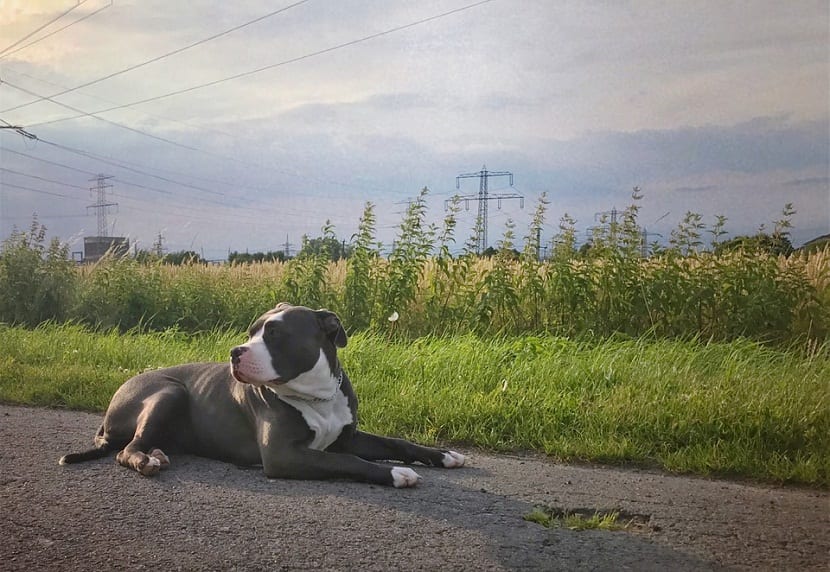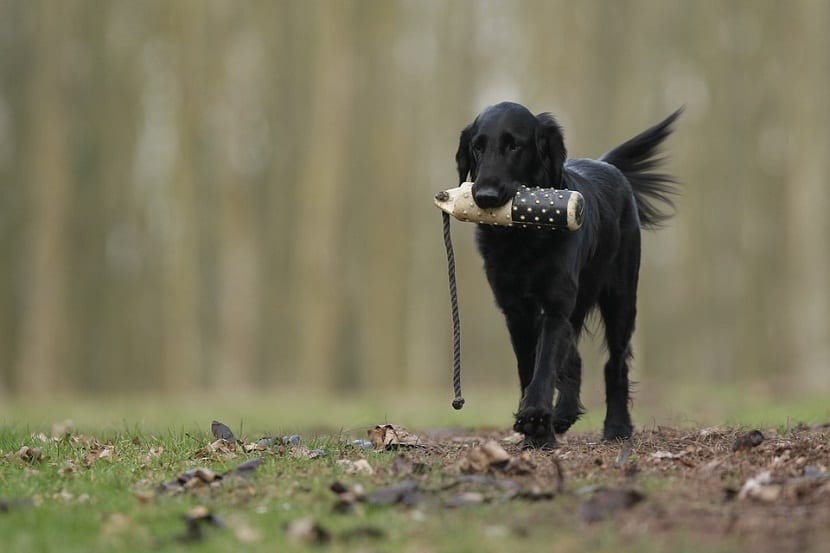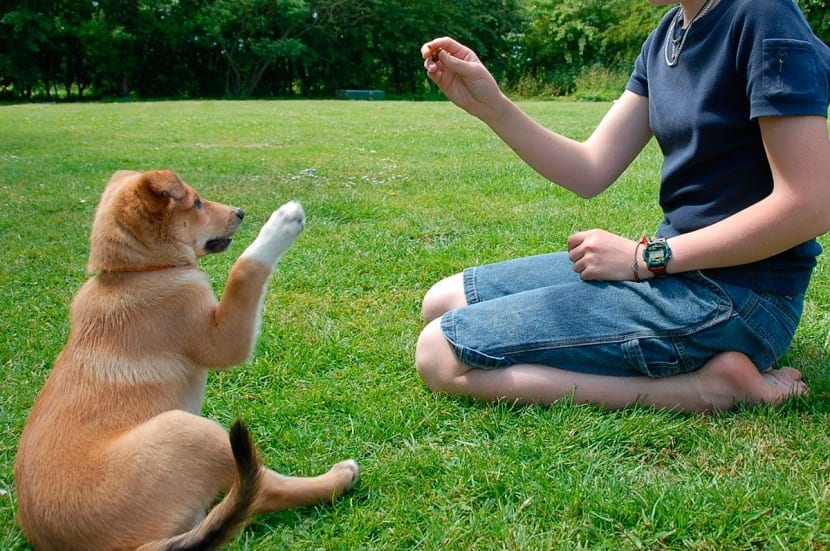
Dogs are enthusiastic students from the moment they are very young, what's more, some breeders even begin basic training with puppies as young as five weeks old, so it is never too early to start training.
We can start with our puppy's right paw by teaching him good manners from the moment we take him home.. Every interaction we have with the puppy is a learning opportunity And with a friendly guide, we are going to help you understand the most important lessons, such as greeting new friends without jumping, how to wait quietly for dinner, and what to do with the puppy's teeth.
Common reasons for training

Interacting with the dog in a way that weaves manners into his everyday life sets the stage for future training. What's more, it's easier to add positive behaviors to the repertoire of the puppy to untrain the negatives.
The most obvious reasons to train our dog are to instill in him good behaviors and avoid the development of other inappropriate ones, however, there are others reasons why working with the dog is important, for example:
Life skills: training the dog can give us as an owner and pet a common language and at the same time we teach the dog to navigate our world.
Freedom: training is the dog's passport to the world. A well-trained dog can go to more places, meet more people and have more adventures because he follows the rules.
Peace of mind: when our dog has mastered the training, we do not have to worry that he will run out the door and not return home, or drag us down the street until our shoulder hurts.
Bonding: work on basic team training exercises helps to consolidate the relationship with our new best friend.
Mental exercise: dogs need to work their body and their brain. Although many basic training lessons do not require much physical effort, the mental aspect of Resolving exercise can tire even the most active puppies.
When to start training
Traditional councils suggest waiting until a puppy receives a full series of vaccinationsBut it is now understood that the risk of under-desocialization during this important developmental period far outweighs the risk of possible disease.
According to the American Veterinary Society for Animal Behavior, puppies can start socialization classes at the first seven to eight weeks of age. Puppies must receive a minimum of one set of vaccinations at least seven days before the first class and a first deworming and must be kept up to date on vaccinations.
Accepted methods for learning

Dog learning has changed a lot in the last 25 years and we now know a lot more about how dogs learn and the most effective ways to motivate them. While dog training in the past depended on being the alpha in the relationship and required equipment such as corrective collars or shock collars, behavioral science shows that it is much more effective to use positive reinforcement training, where training is a team activity with both parties working together to achieve the objectives.
Positive reinforcement is methodology suggested by humanitarian organizations, veterinary associations and dog trainers alike.
This type of training focuses on reward desired behaviors, eliminating the reward for unwanted behaviors and avoiding the use of physical punishment or fear to provoke changes in behavior.
El clicker training it's a wonderful way to use the power of positive reinforcement. The clicker is a small device that makes a precise noise and marks effectively when the dog has performed the correct action, this will pay off with a food reward.
Once the dog has mastered the behavior, he can stop relying on them outside of the clicker and after this we keep him until it is time to teach him something new. Clicker preparation can be used for everything- from teaching you the basics like sitting, lowering, and reaching, to more complex behavior modifications for challenges like leash aggression.
Necessary tools for the training of our dog
To start training our pet, we have to do the following:
A collar or harness: we must choosing a collar or harness that won't pinch or pinch. With this the dog should feel comfortable in its collar.
A fixed length strap: it is important that we opt for a strap between four and six meters; any shorter leash might not give the dog enough room to find a suitable place to urinate, and any longer leash might be difficult to handle.
A clicker: it is a training tool that makes the training process seem like a game.
Potty training
Potty training is a behavior that the dog can learn quickly, as long as the puppy is supervised, stick to a specific schedule and also reward you when you do the training successfully.
Supervision requires that we pay close attention to the dog at all times so that in this way we can detect the pre-potty signs.
It is of utmost importance use an appropriately sized box for times when we cannot actively supervise the puppy, as well as for nap time and bedtime.

Schedule the puppy's life will help make your days pleasantly predictable and it will allow us to better track your potty habits. Apart from scheduling your meals, nap times, play times and of course, your trips abroad.
Finally, we must make sure to accompany the puppy outside on each of his trips to the bathroom. If we just wait until he gets home, the dog won't make the connection between his potty and the treat.
When to call a professional
Training should be a pleasure for both us and our dog. Of course, there are often challenges as we work towards improving mannersBut if we get to the point where we get frustrated that training with our pet doesn't pay off, it's time to get help.
Frustration is only a few degrees away from anger and we are probably not going to make progress trying to train the dog when we are feeling angry.
We should also consider bringing in a professional if our dog exhibits behavior that makes him nervous, such as growling or biting, especially if we have small children in the house.
It is safer to start a behavior modification with a professional when a dog starts exhibiting problem behaviors rather than waiting for them to take hold.